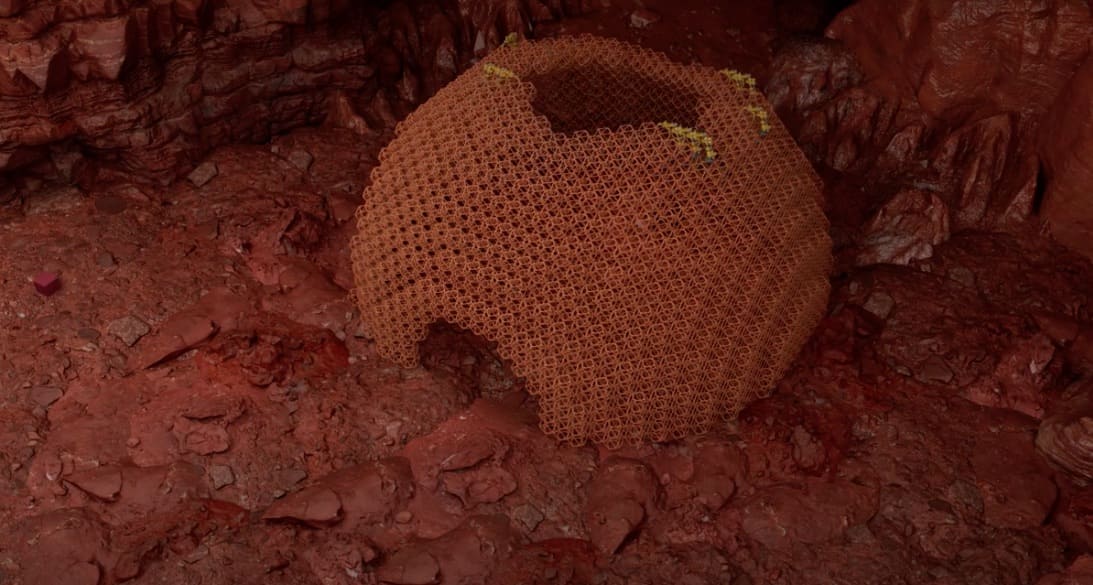
The road to decarbonizing steel, cement, and concrete in the construction sector remains steep. However, more research is focusing on developing eco-friendly building materials as alternatives to traditional ones.
A new study from the Georgia Tech College of Engineering has introduced a modular construction model designed for both Earth-based and “extraterrestrial” environments.
Carbon footprint reduced by 40%
Called Eco-voxels, these modular, reconfigurable, and sustainable units aim to pioneer eco-friendly building materials capable of reducing the carbon footprint by up to 40%.
They also maintain the structural performance required for applications ranging from load-bearing walls to aircraft wings.
“We created sustainable structures using these eco-friendly building blocks by combining our knowledge of structural mechanics and mechanical design with industry-relevant manufacturing practices and environmental assessments”, said Christos Athanasiou, associate professor at the Daniel Guggenheim School of Aerospace Engineering.
A modular solution to the affordability crisis
The Georgia Tech project emerges in a global context marked by a growing housing emergency, where affordability and sustainability issues increasingly intersect. The escalation of climate-related disasters – hurricanes, wildfires, floods – has made existing building stock more vulnerable and driven up insurance costs.
In Italy, for example, debate around mandatory catastrophic insurance policies for homes is intensifying, with the Ministry of Enterprises and Made in Italy (MIMIT) highlighting the need for structural mechanisms to manage climate risks.
At the same time, soaring land prices and strict urban planning regulations are hampering new developments. In this complex scenario, modular, reconfigurable, and circular construction offers a strategic lever to control costs, reduce environmental impact, and respond flexibly to the rising demand for housing. This solution not only ensures high structural performance but also opens new opportunities for more resilient and accessible urban planning.
Eco-voxels outperform CLT wood and 3D printing
Eco-voxels – short for eco-compatible voxels – can be thought of as the 3D equivalent of pixels. These modular blocks are made from polytrimethylene terephthalate (PTT), a partially bio-based polymer derived from corn sugar, reinforced with recycled carbon fibers from aerospace industry waste.
Thanks to their structure, eco-voxels can be easily assembled into large load-bearing structures and later reconfigured without producing waste. They also offer strength comparable to traditional materials, providing a feasible alternative for various construction needs.
When compared to other emerging eco-friendly building materials, such as 3D-printed concrete or cross-laminated timber (CLT), eco-voxels demonstrated greater environmental advantages. While conventional and alternative building materials are often heavy and carbon-intensive, eco-voxel walls achieved significant results, cutting the carbon footprint by 30% compared to concrete and 20% compared to CLT.
Building for space missions
Beyond addressing challenges on Earth, eco-voxels also offer a cutting-edge solution for construction in extraterrestrial environments where traditional technologies fall short. Their light weight, rapid assembly time (under one hour), and the use of sustainable, locally sourced materials make them ideal for long-term space missions, such as human settlements on Mars or the Moon.
“The ability to erect structures quickly is a strategic advantage in space construction,” said Professor Christos Athanasiou. “In hostile environments like space, it’s crucial to use lightweight materials that can be sourced locally”.
The vision driving this research is a built environment that not only reduces ecological impact but also actively contributes to planetary regeneration. It is an ambitious perspective that signals a paradigm shift toward truly eco-friendly building materials.
The study was the result of an international collaboration involving the Georgia Institute of Technology, the Massachusetts Institute of Technology (MIT), the University of Guelph in Canada, and the National University of Singapore. The research was published in Matter.
